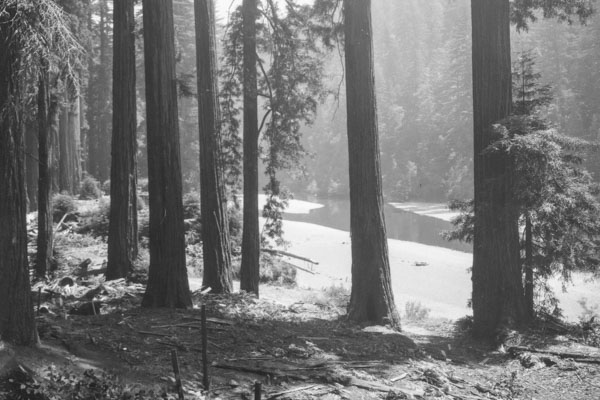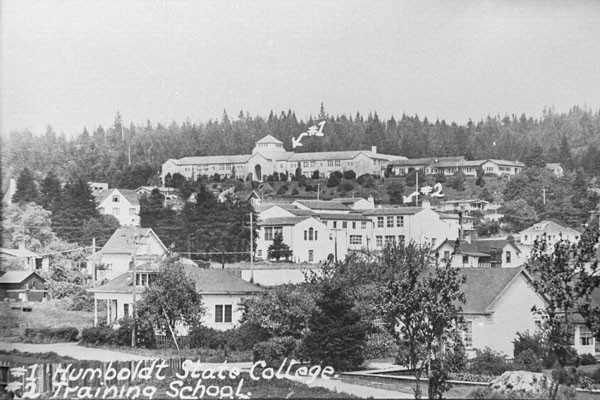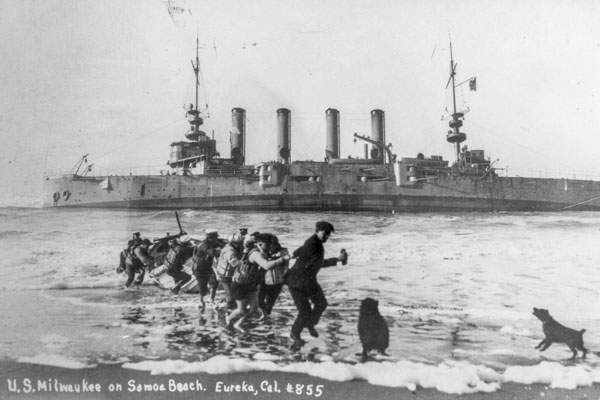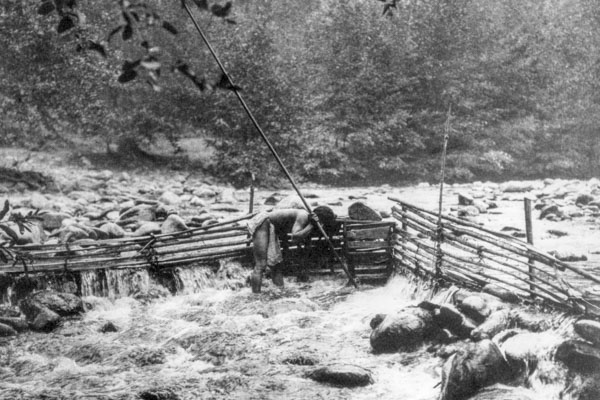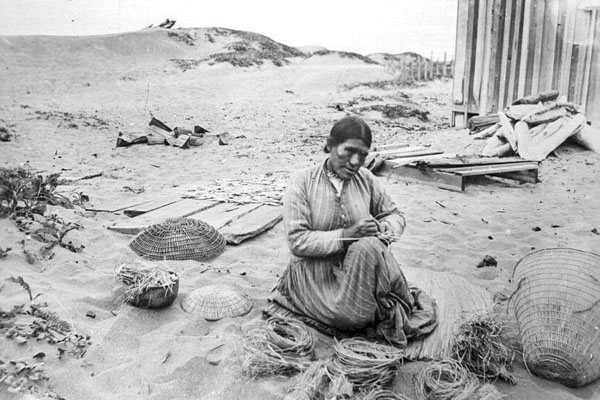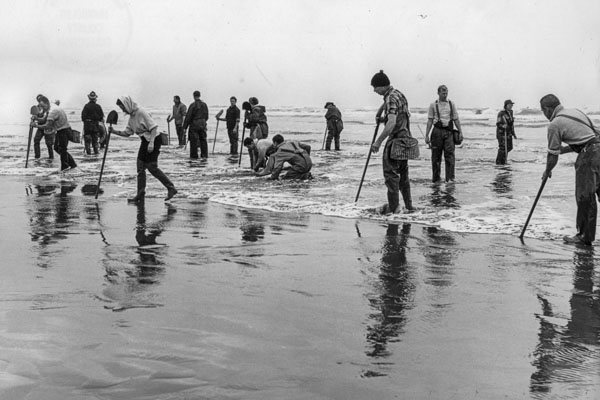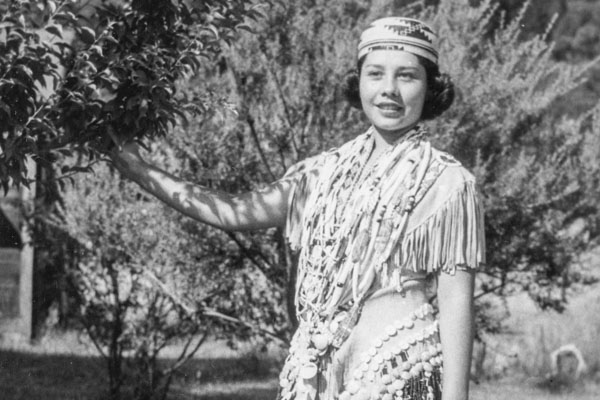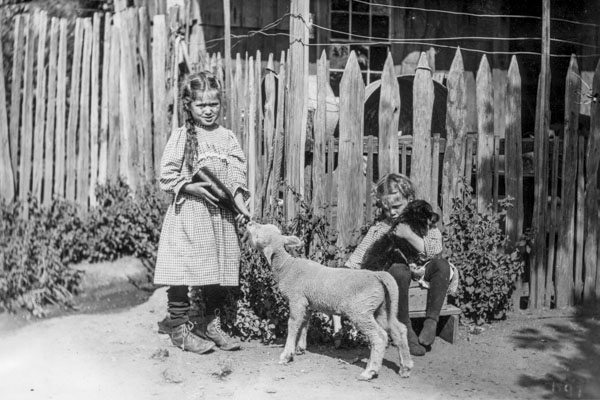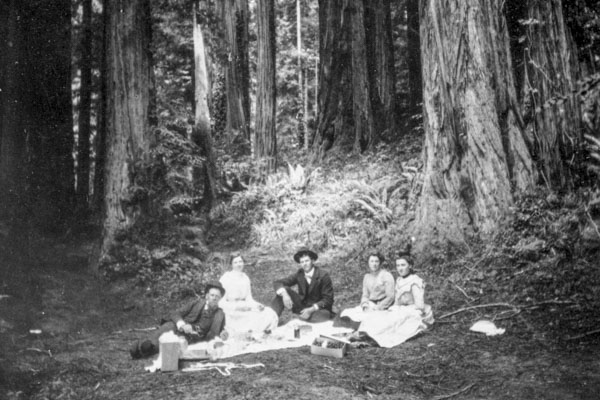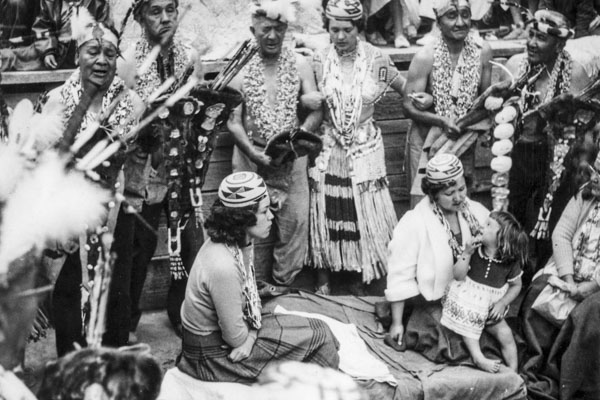You are here
Klamath Forest Alliance Collection - Finding Aid
Abstract
Copyright
Biographical Information
Scope and Content of the Collection
Related Works
Collection Number
2014.01
Contact Information
The University Library, Special Collections
Cal Poly Humboldt
One Harpst Street
Arcata, California 95521
URL: https://specialcollections.humboldt.edu/klamath-forest-alliance-collection
Processed By
Adrienne R.S. Harling, MLIS, CA and Felice Pace
Date Collection Processed
2014
Language
English
Collection Creator
Klamath Forest Alliance and Felice Pace
Dates Covered by Collection
Bulk: 1980-2005
Inclusive: 1970-2010
Size of Collection
93 Cubic Feet: 87 Record Storage Boxes, 1 Oversize Box, 6 Photo "Shoeboxes"
Abstract
The collection was created by the Klamath Forest Alliance (KFA) and Felice Pace (Mr.). Between the late 1980s and 2010, KFA, with Felice as its leader, played major roles in the "timber wars" in northwest California and southwest Oregon, including timber sale appeals and litigation to defend roadless areas, the Northern Spotted owl controversy, and efforts to protect Ancient Forests through federal legislation. KFA championed conservation biology approaches to protecting biological diversity and the protection of biological corridors linking protected areas, including via development of the Klamath Corridors Proposal and through national forest plans.
KFA also worked to protect and restore Pacific Salmon species, to promote watershed restoration and the restoration economy as an alternative to timber dependence, and to persuade the Forest Service to decommission logging roads that posed watershed risks. Volunteer watershed advocacy in the Salmon and Scott River Basin and participation in the federal Klamath River Basin Restoration Program by KFA co-founders Felice Pace and Petey Brucker grew into KFA's River Program.
The collection includes Felice's prior work with California Indigenous American tribes and NGOs, Siskiyou County, the Marble Mountain Audubon Society and the Siskiyou Regional Education Project that promoted bioregionalism and published Siskiyou Country Magazine in the 1980s. It includes press clip series on national forest and Klamath River issues and information on operations of the anti-environmental Wise Use Movement in Northern California and Southern Oregon.
Access
Open for research by appointment
Copyright
Klamath Forest Alliance and Cal Poly Humboldt hold joint copyright to the materials of this collection that are authored by Felice Pace or the Klamath Forest Alliance until 2025, at which point Cal Poly Humboldt will gain full copyright to those materials. To obtain permission to publish or reproduce in any format please contact the Special Collections Librarian.
Acquisition Information
The collection was donated to the Cal Poly Humboldt Library in 2014 by Felice Pace and the Klamath Forest Alliance. It was processed prior to being received by the Library.
Biographical Information
See the websites for Klamath Forest Alliance and Felice Pace for current information. See the Biographical/Historical Essay by Felice Pace for historical context for the collection.
Scope and Content of the Collection
The KFA archive includes several types of documents:
- Correspondence among activists, between organizations and with federal and state officials. This correspondence will be useful to those who want to understand the development and operation of the grassroots movements to end aerial herbicide spraying, curtail clearcutting, end the logging of old forests (Ancient Forests or Old Growth), stop road building, encourage the decommissioning of logging (dirt and gravel) roads, end the degradation of aquatic habitat and Pacific Salmon resulting from road building and clearcutting in riparian areas and on steep, unstable slopes. These files also track development of the movement to restore Pacific Salmon, including attempts to get federal funds allocated for salmon restoration and development of the restoration economy. These documents can provide insight into relations among organizations within the environmental/public land protection movement including the sometimes testy relationship between grassroots organizations and national/regional environmental organizations. In particular, insights into how the Ancient Forest Protection Campaign and California Ancient Forest Alliance were organized and maintained can be obtained via the correspondence, drafts of Ancient Forest legislation, etc.
- Plans and planning documents related to national forest and river/aquatic/salmon management and monitoring. These include early state wild & scenic river plans, salmon and watershed restoration plans, forest land and resource plans and forest restoration plans. Often early salmon restoration and river/stream protection plans can be compared with later plans to get an idea of the development of the Restoration Economy, how water quality and other conditions (fisheries) have changed over time and (especially) how the goals and objectives of state and federal agencies for fisheries, aquatic and terrestrial habitat and protection have changed over time.
- Timber sale, timber sale administrative appeal and timber sale litigation documents. These documents can provide insight into the types of logging being opposed by grassroots activists and environmental organizations and the issues being raised concerning logging and road building on national forests in general and Northwest California in particular.
- Efforts to list the Northern Spotted Owl (NSO) under provisions of the Endangered Species Act, the resistance of National Audubon and other national groups to the listing and relations between the NSO lawyers and grassroots clients. There is also information in the archive, including maps, about the effort by National Audubon and grassroots groups to map Old Growth forests on national forests within the range of the Northern Spotted Owl. KFA activists (mainly Petey Brucker and Felice Pace) produced over 90 USGS quad map overlays showing the location of Old Growth, clearcuts and younger forests on the Klamath National Forest (KNF). From these maps Felice and Petey constructed a composite map of Old Growth and clearcuts on the KNF. Felice took that map to DC. The Forest Service had refused to tell Congress where Old Growth was located; this was the first Old Growth map taken to Congress. Jim Lyons, later President Clinton's Assistant Secretary of Agriculture in change of the Forest Service was then a Congressional staffer. He was the first official to see the Old Growth map.
- The decision and efforts to open a second front in the movement to expand the Ancient Forest Protection Campaign from a focus on NSO habitat (terrestrial habitat protection) to include Pacific Salmon (aquatic habitat protection).
- Maps and educational posters related to forests, wildlife, aquatic resources and water quality. This includes maps from the Forest Service and other government agencies, maps generated by Marble Mountain Audubon Society identifying Old Growth forests on the Klamath National Forest and maps generated by KFA, including the Klamath Corridors Proposal to link existing wilderness areas with biological corridors and a Regional Trail Plan produced by Felice Pace. There are also maps presenting remote sensing data and allied scientists' reserve designs for the region. Educational posters deal with the status of and threats to salmon stocks, rare plants and wildlife habitat. There are also flip chart sheets with notes from meetings and strategy sessions held by environmental organizations on Sierra Pacific Industries and Coho Salmon.
- Photographs and slides used in public education and to document forest and watershed conditions on the Klamath National Forest and in Klamath River Basin rivers and streams. These include images of clearcuts, road failures, natural fire areas and the impacts of fire suppression on national forest watersheds. Images of agricultural activities, including irrigation, from within the Scott, Shasta and Upper Klamath Basins and the impact of agriculture on stream conditions and water quality are also included. There are slide shows and individual slides that are organized topically, e.g. clearcuts, road problems, fire, salvage logging, etc.
- Felice's work prior to the founding of KFA. This includes materials which can provide insight into the back-to-the-land movement of the 1970s, early development of the progressive left and the forest protection movement in Northwest California and Southwest Oregon, development and growth of tribal governments throughout Northern California and especially development of Karuk, Pit River and Quartz Valley tribal governments. Materials in this part of the collection also provide insights into the issues faced by youth and the war on drugs in Northwest California in the 1980s when Felice coordinated Alcohol and Drug Prevention and Education services for Siskiyou County. These include material on Outdoor Adventure, an Outward Bound type program Felice founded and directed that took troubled teens on wilderness adventures designed to build self esteem.The specific programs and organizations to which these materials relate include Siskiyou Citizens for Building Reform, the Siskiyou Regional Education Project, and Marble Mountain Audubon (MMA), a chapter of the National Audubon Society which Felice and others founded in 1980. The Siskiyou Regional Education Project (SREP) published Siskiyou Country, a bioregional journal for which Felice wrote in the mid to late 1980s and organized several bioregional conferences. Native American tribal materials come from work Felice did directly for tribes and native NGOs and work he did as an associate of Peters and Associates, a Native American-owned firm which had funding from the Bureau of Indian Affairs in the 1980s to provide technical assistance and development services to federal tribes throughout California.
Arrangement of Collection
The original order of the collection was completely preserved in the processing of this collection. That order was established through KFA's practice of packing up records that were no longer being used when they ran out of room for the new records being created. Thus, the arrangement generally is based on when the records were created. Within sections that were "archived" at a given time, they are further subdivided into subject categories that are fairly consistent throughout the collection. These are loosely summarized in the series descriptions below. However, because similar subject areas continued to be worked on throughout the life of the organization, the subjects are found throughout the collection and the container list does not directly mirror the subject-based series categories. The subject-based series descriptions are provided to support researcher access to the topics within the collection, but subjects were not physically pulled together in the boxes. Researchers interested in subjects that were worked on over time by KFA should expect to work from many boxes throughout the collection.
The KFA Collection was processed using private funds prior to deposit at HSU. It was processed using a minimal processing approach. Unprocessed, the collection was in its original order, in good condition, and its contents were thoroughly labeled. Photographs and media were already separated from other paper materials, as were significant portions of newsprint press clips. Upon processing, collection contents were reboxed into archival boxes, but original folders were retained. Paper files were not weeded and received very little preservation work. Staples and paperclips were not removed unless rust damage was noticed. Thermofax paper is represented throughout the collection but was not preservation photocopied due to limitations of initial processing resources. Upon deposit it is recommended that this step of preservation photocoyping the thermofax paper in the collection be taken. In addition, video, audio and digital media were inventoried but not migrated to current formats. It is recommended upon deposit that this preservation work also be done. Felice Pace wrote the vast majority of the descriptive material in the finding aid.
Series: Oversized - Rolled and Flat (Box 1)
This series consists of maps and posters used by KFA for public education, to evaluate Forest Service land use and species protection proposals, to plan and inform Old Growth and other forest conservation strategies and to evaluate and propose salmon, Northern Spotted owl, other species and biodiversity protection. It includes a variety of Forest Service maps and poster-presented data and the Klamath Corridor Proposal maps, a KFA/Felice Pace proposal to link national forest wilderness areas in the Klamath Mountains (NW Ca. and SW Or.) with landscape linkages, including roadless areas. An earlier Regional Trail Plan map-based proposal developed by Felice and presented to the Forest Service is included. Also included are a few of the signs and posters used in Siskiyou County to oppose KFA's objectives.
This series includes Old Growth maps generated as part of National Audubon's Old Growth Mapping project, including the first map of national forest Old Growth within the range of the Northern Spotted owl which was taken to Washington DC and presented to congressional committee staff by Felice Pace and Brock Evans. It also includes remote sensing products produced by Reed Noss, Carlos Carrol and other scientists to identify old forest habitat and to inform science-based conservation proposals.
Series: Library - Bound Volumes (Boxes 2-7)
Included in this series are government documents and documents produced by the environmental community. Government documents include national forest land use planning documents, planning and project environmental analysis documents, national forest watershed assessments and other assessment document that are primarily for the Klamath National Forest but also include documents related to other Northern California national forests, the Upper Klamath River Basin National Wildlife Refuges, geothermal development in the Medicine Lake Highlands, mining proposals and documents related to fisheries (salmon) assessment and protection. Consultation documents for PacifiCorp's Klamath Hydroelectric Project relicensing are included as are various county and regional economic assessments and development plans, including a regional economic assessment of the Klamath River Basin commissioned by KFA and its allies and a study of the Siskiyou County Economy conducted by sociologist Kari Norgaard for KFA. Also in this series is the regional water quality plan that implements the Clean Water Act, a media analysis on attitudes toward forest protection, KFA materials in binders used for public education, and other miscellaneous bound documents.
Series: Paper Files (Boxes 8-86)
This series includes files on all the major issues KFA focused on but also includes files from Felice's pre-KFA work with Indigenous American tribes. Forest issue files deal mostly with national forest issues (logging, forest roads, forest fire, discretionary fire suppression, mining, land use, wildlife, fisheries) but also include Bureau of Land Management, private industrial logging and endangered species issues.
River, water and fisheries issues include files dealing with agricultural practices (especially stream diversions and groundwater pumping), dams, watershed analysis and rehabilitation, and water management. Included are watershed and fisheries restoration efforts on the Salmon River and the organization and work of the Scott River CRMP (Coordinated Resources Management Planning) - a collaborative approach to dealing with agricultural impacts to salmon and steelhead, ESA salmon listings and related issues which operated during the period following ESA listing of Southern Oregon and Northern California (SONCC) Coho Salmon.
There are files on KFA's Outreach and Public Education efforts, including the handouts used in tabling at Siskiyou County Fair, environmental conferences and other events and workshops. Several files contain separate time-series press clips for Forest and Klamath River issues. These files document how local, regional and (occasionally) national print media reported on the "Forest Wars" of the late 1980s through the early part of the present century.
Files dealing with local political issues in Siskiyou and Humboldt County include files on alternative housing, folks living on mining claims, herbicides and harassment of Felice Pace, Petey Brucker and other KFA folks by activists trained in techniques developed by the Wise Use Movement to intimidate environmental activists. KFA administrative files are in this series including grants received, grant reporting, mailing lists, tax filings and other administrative files.
Select Topics:
- Felice Pre-KFA: Native American, Karuk, Quartz Valley Rancheria, Consulting
- Forest: 6 Rivers National Forest, Ancient Forest Alliance (AFA), Ancient Forests, Appeals, Audubon, Biodiversity, Board of Forestry, Bureau of Land Management, California Law, Economics, ERFO, ESA, Federal Law, Fire, FOIA, Forest Health, Forestry, Grazing, Klamath National Forest, Klamath Siskiyou Alliance, Marble Mountain Audubon, Mining, Modoc National Forest, National Issues, Northwest Forest Plan, Option 9, Private Forests / Forestry / Timber, Roads, Sales, Scoping Analysis, Shasta-Trinity National Forest, Timber, Toxics, USFS, Wildlife
- River, water and fish: Agriculture, Dams, Fish, Klamath River, Rehabilitation, Salmon, Salmon River, Scott River, Scott River CRMP (Coordinated Resources Management Planning), Water, Watershed Analysis
- Education, Outreach and Public Education: Handouts, Outreach, Public Education
- KFA Organizational and Administrative: Administration, Environmental Organizations, Grants, Mailing Lists, Phone Messages, Proposals, Taxes
- Local Politics / Anti-Environmental Movement / Wise Use Movement: Humboldt County, Local Politics, Wise Use Movement, Siskiyou County, Building Reform, Ordinances
- Press Clips
Series: Photos/Slides (Boxes 87-93)
This series includes photographs used in public education (posters and handouts, supplied to media folks, etc.) and to document forest and watershed conditions on the Klamath National Forest, other Northern California national forests, the Klamath Basin National Wildlife Refuges, and in Klamath River Basin rivers and streams, especially the Scott River, including agricultural practices and conditions like dewatering and pollution of streams by cattle and agricultural return flows. The series should be useful to those who want to understand how KFA activists sought to influence/change public opinion and to those who want to get an idea of forest, watershed, water quality, stream conditions, agricultural, other land use and economic conditions in the Klamath Mountains and Klamath River Basin from the late 1980s through the early years of the 21st century.
Included are images of clearcuts, road failures, natural fire areas and the impacts of fire suppression on vegetation and national forest watersheds. The collection also includes photos showing agricultural activities, including irrigation, the impact of agriculture on stream conditions and water quality, and economic conditions in Siskiyou County.
Series: Slides (Box 94)
This series includes transparency slides used in public education and to document forest, stream and watershed conditions and land use practices on both public and private land. There are slide shows included which were used by Felice Pace and others in presentations at conferences, at meetings and in other public presentations. Many of the images on the slides are also present as prints in the photo series above. Most of the slides are not part of slide shows but are organized topically, e.g. clearcuts, road problems, fire and salvage logging, etc.
Series: Unprocessed Digital, Audio and Video Media (4 boxes)
Container List
Also available as a ![]() PDF
PDF
Bibliography
Related Works
The following Cal Poly Humboldt collections are related to the KFA Collection and may be complimentary research sources for those interested in environmental history in the northwestern California region and how regional activists affected broader environmental movement and policy.
- Rudolf W. Becking Collection - Rudolf Becking was a professor of forestry and natural resources at Humboldt State who was politically active in regional, state, national and global environmental issues. His political environmental work started prior to the work of Felice Pace and KFA.
- Environmental Protection Information Center (EPIC) Collection - EPIC is an Arcata-based environmental organization that was founded in 1977 and worked on many of the same issues as KFA.
- Tim McKay Collection - Tim McKay worked at the Northcoast Environmental Center, a Humboldt Coast-based environmental organization. He was a colleague of Felice Pace.
Subject Headings
Environmentalism--California, Northern
Old Growth forests
Pacific Salmon
Klamath River (Or. and Calif.)
Anti-environmentalism
Wise Use Movement
Logging
Klamath National Forest (Calif. and Or.)
Herbicides--Environmental aspects
Bioregionalism
Watershed Restoration
Fisheries--California
Forest Roads
Landslides
